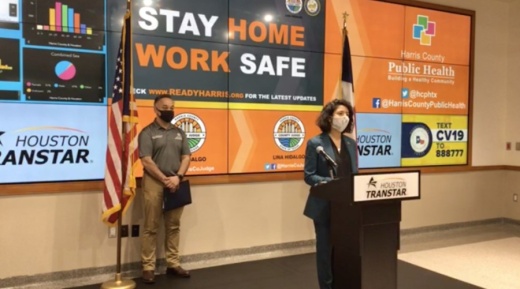While Hidalgo said the order had not yet been extended as of the press conference, which began at 12:30 p.m., she intended to sign the order later May 21.
"The alternative to extending the order is letting it expire, and I don't want the community to get the message that we're done; our work is not done here," Hidalgo said during the press conference. "Remember, there's still no cure, no vaccine. The only reason we haven't seen a situation like Italy, like New York is simply ... because we've done our work. We're no safer than we were in March."
While Hidalgo did not specify to what date the order would be extended, the order extension comes two days after Harris County Commissioners Court unanimously extended the county's disaster declaration through June 10. She added the order would align with Texas Gov. Greg Abbott's most recent executive order.
"I'm very much committed to staying aligned with the governor on the parameters he issued and so the order reflects the parameters he has," she said. "We also wanted to extend the order so that our local health authorities, local law enforcement and the public at large knows where Harris County stands with this. We need to make sure that there's a record of the recommendations that Harris County still is issuing and so those will be in the order. They are adapted from the governor's recommendations, as well as the recommendations we always have based on CDC [Centers for Disease Control and Prevention] guidance."
This is the second time the order has been extended and the third amendment since it was first issued March 24.
"We're not out of the woods and the moment we get overconfident, we put our community at risk," Hidalgo said. "Even from an economic perspective, it will be far worse for our economy if we have another crisis—one that might lead the economy to have to shut down again."
After the order is signed, Hidalgo said it would be released to the public and available online at www.readyharris.org.
Worker guidelines
During the press conference, Hidalgo also announced the release of new guidelines to ensure the health and safety of essential employees and their employers.
"It's not enough to call essential workers our heroes," Hidalgo said. "We have to create an environment in which they're safe and they don't feel like they have to choose between safety and putting food on the table. And so today, we're releasing two sets of guidelines to serve as a bridge from policy to practice. They create a baseline expectation of safety. ... We're trying to take the guesswork out of this."
The two sets of guidelines, which were developed with the Harris County Public Health department, are geared toward public-facing businesses, such as retail, restaurants, and construction and manufacturing businesses.
"Simply put, these guidelines are designed to help lift the real dangers and the sheer fear that workers are exposed to and suffer from day to day when they're trying to keep our economy going and to keep us safe," Hidalgo said. "No worker should be penalized or shamed for following public health advice when it comes to COVID-19. In Harris County, no one should have to decide between getting sick or putting food on the table, and that's what this is about."
For construction and manufacturing businesses, the guidelines recommend employers stagger start times to avoid groups of people at the start of a shift. The guidelines also recommend employers allow 15-minute breaks at least every four hours so employees can wash their hands and take necessary hygiene measures.
For public-facing businesses, the guidelines recommend employers allow 15-minute breaks every hour so employees can wash their hands and take necessary hygiene measures. The guidelines also recommend employers follow CDC guidelines for routine cleaning and set up Plexiglass where feasible to minimize direct interaction with the public.
"A lot of businesses, a lot of business owners are already doing this, if not the vast majority of them, and the intent is to provide you, employers, with the best information to take the guesswork out of what this is," she said. "This is intended to connect folks with the best science to make your job easier."
For both types of businesses, the guidelines also recommend employers identify a safety monitor to oversee the guidelines; ensure everybody signs in when they arrive to work; ensure every employee has contact information so if there is an outbreak, contact tracing can be completed; encourage all employees to wear face masks; and screen employers for COVID-19 symptoms.
For a complete list of guidelines for public-facing businesses, click here. For a complete list of guidelines for construction and manufacturing businesses, click here.





